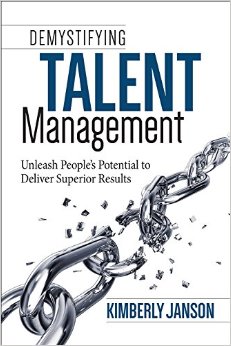To kick off our 2015 Talent Management theme, we invited Liz Wiseman to join Sue Bethanis as a guest on WiseTalk. Liz is a highly regarded leadership expert recognized by Thinkers50 and author of the new Wall Street Journal best seller Rookie Smarts: Why Learning Beats Knowing in the New Game of Work. She is the President of the Wiseman Group, a leadership research and development firm headquartered in Silicon Valley, California.
Sue and Liz had a rich dialogue on the research and findings in her book Rookie Smarts. One of our biggest a-has from the conversation was about the value of the inexperienced. It could be said that those who are new to something for the first time can’t bring value, but we learned that this is essentially a myth. Those who are inexperienced operate from a “hungry state.” They lack expertise so look outward to a network of experts to get ideas and leverage their knowledge a project, much more so than experts. We also learned in the tech world, where everything is changing so fast, the value of the experienced leader is in how fast he or she can learn, not what they know.
Favorite Quote:
“When I’m quick to say yes to something I don’t know how to do, I don’t need a personal development or learning plan that tells me to go work in certain ways that are against my nature, I’m just forced to do it.”
Insights:
- Liz’s definition of a rookie is being new to something important and hard, regardless of age. Whether you’re 21 or 71, it’s doing something you haven’t done before. The value of a rookie doesn’t come from bringing fresh ideas. The value comes from bringing no ideas. When one comes in and has a gap in knowledge, it puts them in a predictable hungry state. They tend to point outward, ask more than talk, they lack expertise so seek it out in others. Liz mentioned an interesting data point: the inexperienced bring in 5x level of expertise on a problem then experts. The reason is because they lack expertise, so they point outward and ask for help. Rookies mobilize a network of expertise and bring it back to bear on a problem. When they ask others how they do something, they receive a diverse set of voices that they have to reconcile. The process of reconciling is when some of our best thinking is done and is why rookies get so smart in the space of relative ignorance.
- In her research, Liz found that experience leads to success but rookies are surprisingly strong performers and in many cases outperform people with experience. Those cases are the knowledge industry, where work is innovative in nature and where speed matters. Why? Not because rookies are more skilled, but because they are more desperate. They have “no points on the board,” they are the new kid on the block, so work quickly to deliver quick wins and proof points to see if they’re on track. The most successful veterans and rookies operate in fundamentally different ways. When she looked at low performing cases, they failed in very similar ways.
Tips for capturing rookie smarts:
- Individuals: Liz suggests individuals try not to linger too long in a job that you’re qualified for. Say yes to things you don’t know how to do. When we keep putting ourselves out there in rookie situations, we are forced to ask questions and seek help, because we don’t know what we’re doing. She also suggests refreshing your assumptions by practicing “naive” questions, such as, what are we doing this for? Who is the real customer here? What happens if we don’t do anything? A fun exercise to audit our assumptions is to ask, what is it we believe to be true about this? Our work? Our customer base? List out the assumptions and see if you have evidence to support them or if you have evidence to the contrary. Also, swapping jobs with someone for a day will build empathy for what others do, as well as leave you with fresh ideas that can help you innovate.
- Feed a diet of challenge: In Liz’s research, she found, on average, it takes someone about three months to wrestle down a new challenge, and about three months after to be ready for the next one. The real practical way to keep you and/or your team rookie smart is to continue to feed yourself or your team a diet of challenge. Ask every three months, am I or is this person ready for a new challenge? Not more work, but harder work. Liz’s research also correlated satisfaction with challenge. As challenge goes up in a job, so does satisfaction and vice versa. If leaders want to drive satisfaction up on their teams, give them harder things to do.
- Power combinations: At team level, one suggestion Liz offered is for leaders to be deliberate about how power combinations are created. There is value in the way that both rookies and more experienced talent work. Partnering this talent is important, such as reverse mentoring and being clear about giving veteran leaders a chance to learn from rookies on their team. Try pairing a team of rookies anchored by expert, or put an empowered rookie on a team with more experience.
What we found most interesting:
In Liz’s research, when she looked at high-performing rookies, she found the most valuable/highest performing of the rookies were experienced executives taken out of one domain and put into a different one. They know enough to know the good questions to ask, how to manage people, and have their “sea legs” but are placed in a different sea so don’t know all the answers. This is where she found executives are at their best.
To learn about Liz’s approach to the extensive research, the four rookie mindsets, and more interesting insights from Liz and Sue on mid-career professionals and the world of work today, listen to the recording here.
MORE


